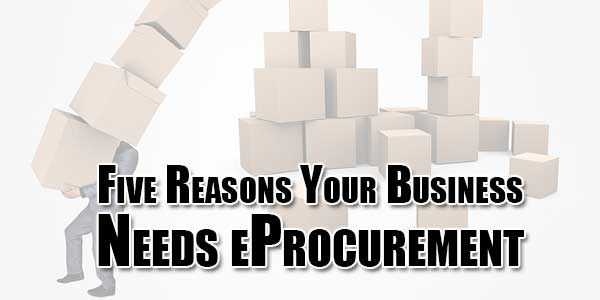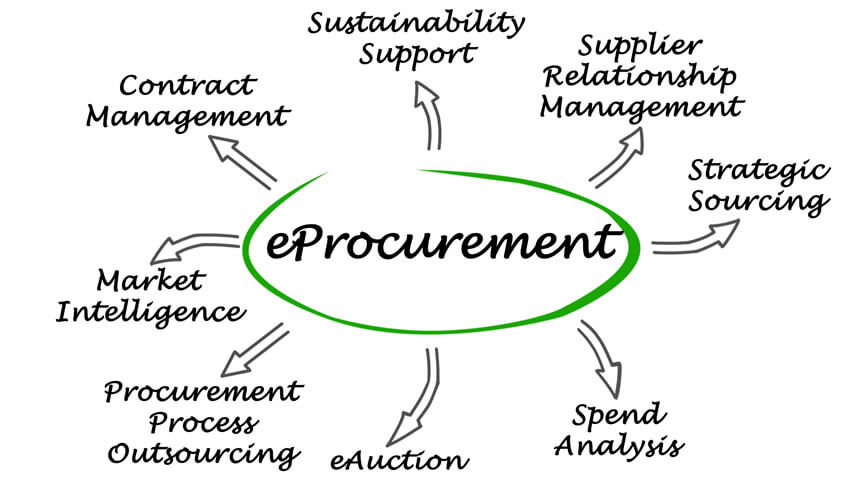
Over the last decade, eProcurement has become an important component of supply chain management. It is widely recognized that procurement and supply chain management are strategic business functions. Problems with the supply chain resound throughout an organization, impacting projects, timelines, and revenue. While eProcurement platforms aren’t a magic bullet that fixes all procurement issues, they do allow businesses to increase the productivity of procurement professionals, reduce the likelihood of costly procurement errors, and centralize procurement data for more insightful analysis.
In spite of the benefits of eProcurement, some businesses continue to conduct procurement manually. They process orders by hand. They distribute documents by email. Data is laboriously entered into spreadsheets and customer relationship management applications, or, more often remains locked away in PDFs and emails. It is possible to manage B2B transactions like this — after all, that’s how it was done for decades — but it’s expensive, inefficient, error-prone, and resistant to automation.
As a procurement professional, you may recognize the need for eProcurement at your business, but face challenges getting buy-in from managers and executives. To persuade the eProcurement-averse, you need to be able to summarize the benefits of eProcurement persuasively. In what follows, I look at five of the primary benefits of eProcurement adoption for organizations that have yet to digitize procurement.
Table of Contents
Productivity:
Procurement is a document- and data-intensive field. Even a straightforward B2B sale might involve letters of intent, supplier evaluations, contracts, requisition orders, purchase orders, invoices, and more. All of that documentation has to be scrutinized, assessed, signed, and sent to the right people. This is the bread and butter of procurement professionals, but eProcurement can make the process faster by automating time-consuming manual work and ensuring that documents get where they need to be.
For example, with the right integration, eProcurement platforms can turn authorized requisition orders into purchase orders in a supplier’s ecommerce store without manual intervention. With punchout catalogs, the requisition order can be created automatically too. A procurement professional chooses products from a supplier’s catalog from within their eProcurement platform. When they “punch out,” the requisition order is automatically queued for approval.
Transparent Spending:
It is challenging or, more accurately, impossible to monitor and manage spending when procurement data is not funneled into a central store. Before eProcurement, data on spending and suppliers was locked away in silos. With eProcurement, all requisition, spending, supplier performance, discount, and associated data is stored on the same platform. With that data, businesses discover cost savings and efficiencies that can drastically cut the cost of B2B transactions.
SAP Ariba expressed this idea concisely when it said, “spend management is the tried and true practice of comprehensively managing all supplier relationships and company purchasing to identify every dollar spent and get the most out of it.” An eProcurement platform helps businesses to gain insight into spending so that they can make the right decisions about where limited budgets are spent.
Reduced Errors:
eProcurement reduces error rates by enforcing predetermined processes and automating error-prone manual data entry. Consider what it means for a requisition order to have been approved. If it’s an electronic document communicated by email, does it have the right digital signature or is it approved by a manager just saying so? Is there a record of who authorized the transaction? Is there any way to check how long it has been waiting for authorization? Once it’s authorized, who is responsible for handing it off to the supplier?
These are questions of process. A key strength of eProcurement platforms is that they make processes explicit. Anyone with access can see the current status of an order. It’s clear that the order has been processed according to predetermined standards and has been approved at the right level. It’s also evident when the correct processes haven’t been followed.
All of this is possible with manual systems, but it involves a lot more work and introduces sources of error. We’ve all heard the horror stories of massive over- or under-ordering because someone transposed a decimal point when moving data around.

Reduced Costs:
When businesses migrate to eProcurement, they typically save between 50% and 70% of the cost of each order. I have already mentioned some of the ways in which eProcurement introduces cost efficiencies: increased productivity, greater insight into spending patterns, and reduced errors. But eProcurement can also help businesses minimize rogue spending.
Also known as maverick spending or tail spending, rogue spending is spending that occurs outside of the processes mandated by the business’s procurement department. For example, an employee might decide to make purchases from a non-sanctioned supplier to save the business money or because they believe the products are of better quality. Although the motivations are admirable, rogue spending is untracked, may cause legal liabilities, and is unlikely to be as cost-effective as transactions that are part of a negotiated agreement with a supplier.
eProcurement platforms make it easier to reduce the misspending of this type. Without eProcurement, it’s challenging to keep track of where the business’s budgets are being spent — an aid to fraud as well as rogue spending. With eProcurement, all procurement goes through the eProcurement platform, which means every transaction adheres to the business’s procurement policy, and it’s clear when it doesn’t. Spending is tracked and rogue spending is flagged.
Integration And Automation:
Let’s finish with one of the most significant benefits of eProcurement: integration and B2B automation. A midsized business might process tens of thousands of transactions a year from hundreds of suppliers. Each transaction generates at least a requisition order, purchase order, and invoice. That adds up to a considerable amount of data flying around, often via email. It could be made available to an eProcurement platform if it was painstakingly typed in or perhaps scanned with OCR. But there will be many errors, and it takes a lot of people to manually enter that much data.
Automation is eProcurement’s superpower. If an eProcurement platform is integrated with suppliers’ eCommerce applications, the data can flow between them without ever needing to be touched by a human being. Businesses that invest in eProcurement understand the benefits of automation, which is why they often prefer suppliers who are willing to integrate.
We’ve discussed five reasons businesses should use eProcurement: productivity, transparent spending, reduced errors, reduced costs, and automation. But the best reason is this: eProcurement allows businesses to take control of procurement and to optimize a business function that can have a critical impact on the bottom line.

 About the Author:
About the Author:












Be the first to write a comment.